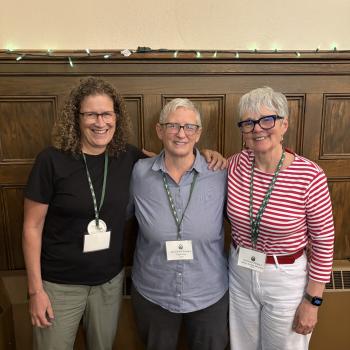But maybe this is just a financial matter. This is the implication of the Hopkins finding that, when volunteer time is included and monetized using an average wage rate, European countries overtake America in total charity as a percentage of GDP.
Translating volunteer time into monetary terms is a dicey business. To understand this, consider how we could value volunteer time in the U.S., compared with France. Let's say we were to use the minimum wage to value the wages foregone by volunteers. The current hourly minimum wage is $5.15 in the U.S., versus $9.75 in France, which naturally makes volunteers more "valuable" in France. This bias is compounded by the fact that French unemployment is twice as high as America's, and people retire earlier in France -- meaning that, in reality, many more French than American volunteers actually have a foregone wage of zero, assuming some people (such as students and pensioners) volunteer when paying jobs are unavailable to them.
Rather than looking at a rational value of volunteer time, then, it is clearer to compare volunteering rates between countries. Doing so tells the same story we got from comparisons of money giving. The best source of data on comparative volunteering rates comes from the International Social Survey Programme (ISSP). In 1998, the ISSP focused on volunteering for religious, political, or charitable causes. My analysis of these data shows that no European country reaches American volunteering levels -- indeed, most don't even come remotely close. For example, Americans are 15 percentage points more likely to volunteer than the Dutch (51 to 36 percent), 21 points more likely than the Swiss, and 32 points more likely than the Germans. These volunteering differences are not attributable to any characteristic such as the average level of education or income. On the contrary, if we look at two people who are identical in age, sex, marital status, education, and household income -- but one is European and the other American -- the probability is far lower that the European will volunteer than the American. For example, an Austrian who "looks" demographically just like an American will be 32 percentage points less likely to volunteer, a Spaniard will be 31 points less likely, and an Italian will be 29 points less likely.
The Religious Factor
Why do Americans give so much more than Europeans? Recently, François Heisbourg, director of the Foundation for Strategic Research (a Parisian think tank), summarized the differences between Europeans and Americans: "The biblical references in politics, the division of the world between good and evil, these are things that [Europeans] simply don't get. In a number of areas, it seems to me that we are no longer part of the same civilization." According to a similar analysis in the New York Times by a former advisor to the late French President François Mitterand, "Europe defends a secular vision of the world," whereas the United States has "an altogether biblical self-assurance in its transcendent destiny."
It is simply undeniable that Europe and America are drifting apart culturally, and the drift is nowhere more evident than in the area of religious faith. The percentage of the population that has no religion (or never attends a house of worship) is higher in almost every European country than it is in America, and the percentage that goes to church every week is lower in most as well. In many cases, the differences are dramatic. For example, according to the ISSP data from 2002, a British citizen is three times as likely to be completely secular as an American (63 to 19 percent).
This divergence in religiosity may be one explanation for the huge trans-Atlantic charity gap, given what research has found about the way religious behavior affects American giving. For example, according to the Social Capital Community Benchmark Survey (a survey of about 30,000 Americans in 41 communities nationwide in the year 2000), Americans who attended their house of worship every week or more were 25 percentage points more likely to donate money to charity than secularists (people who never attended, or had no religion), and 23 points more likely to volunteer. Nor is this simply a matter of religious citizens giving to religious causes. Religious people were ten points more likely than secularists to give money to explicitly nonreligious charities and 21 points more likely to volunteer for secular causes. The value of the average religious household's gifts to charity was more than three times higher than the average secular household's.
This clear correlation between secularism and low rates of charity occurs across countries as well. The ISSP data tell us, for example, that 32 percent of Americans attended church regularly in 1998. The same year, 38 percent volunteered for nonreligious charities. Compare this with Germany, where 8 percent attended church and 10 percent volunteered for secular causes. Or Denmark, where 2 percent regularly attended church and 11 percent volunteered.




